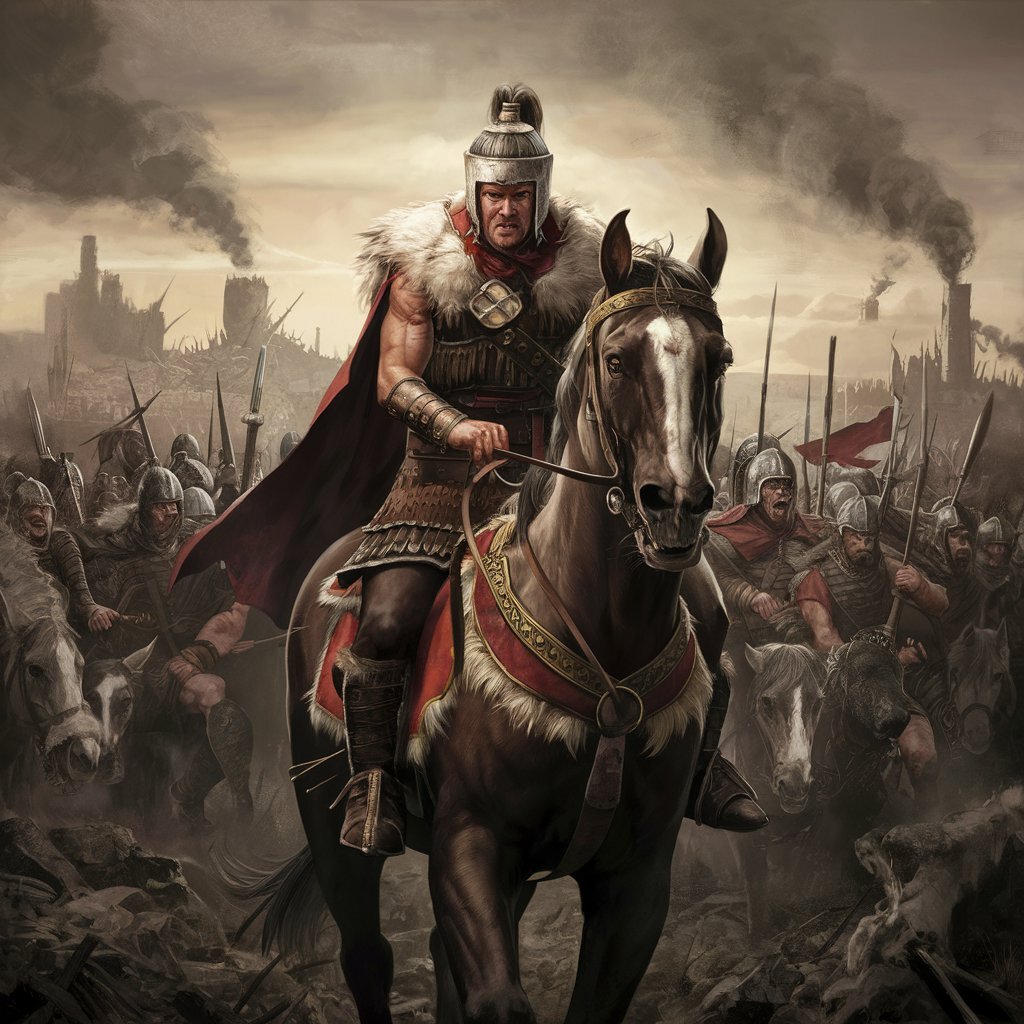
Who was Attila the Hun? Attila the Hun, often called the "Scourge of God," was one of history's most feared and powerful leaders. He ruled the Huns from 434 to 453 AD, leading his people in numerous invasions across Europe. Known for his fierce and ruthless tactics, Attila's name struck terror into the hearts of his enemies. Under his leadership, the Huns became a formidable force, challenging the mighty Roman Empire. Despite his fearsome reputation, Attila was also a shrewd diplomat and strategist. His legacy continues to intrigue historians and enthusiasts alike, making him a fascinating figure to study.
Key Takeaways:
- Attila the Hun, a fearsome warrior, reshaped Europe through ruthless conquests, innovative tactics, and diplomatic skills, leaving a legacy of terror and cultural exchange.
- Attila's personal life, mysterious death, and burial rituals added to his mystique, while his influence extended beyond his lifetime, shaping historical accounts and cultural depictions.
Who Was Attila The Hun?
Attila the Hun, a name that strikes fear even today, was one of history's most formidable warriors. Leading the Huns, he carved a path of destruction across Europe during the 5th century. Let's dive into some fascinating facts about this legendary figure.
-
Attila's Early Life: Born around 406 AD, Attila grew up in a nomadic tribe. His early life remains shrouded in mystery, but he quickly rose to power.
-
The Scourge of God: Attila earned the nickname "The Scourge of God" due to his ruthless conquests and the terror he inspired.
-
United the Huns: Attila and his brother Bleda co-ruled the Huns, uniting various tribes under their leadership. After Bleda's death, Attila became the sole ruler.
-
Diplomatic Skills: Despite his fearsome reputation, Attila was a shrewd diplomat. He negotiated treaties with the Roman Empire, extracting hefty tributes.
-
Battle of the Catalaunian Plains: In 451 AD, Attila faced a coalition of Roman and Visigoth forces. Though the battle was inconclusive, it marked one of the few times Attila's advance was halted.
Attila's Military Prowess
Attila's military strategies and tactics were legendary. His ability to lead and inspire his troops made him a formidable opponent.
-
Innovative Tactics: Attila employed innovative tactics, including feigned retreats and surprise attacks, to outmaneuver his enemies.
-
Siege Warfare: He mastered siege warfare, using battering rams and other siege engines to breach fortified cities.
-
Mobile Warfare: The Huns were known for their exceptional horsemanship. Attila's forces could move quickly and strike unexpectedly.
-
Psychological Warfare: Attila used psychological tactics to intimidate his enemies, spreading fear and chaos before battles even began.
-
Loyalty of His Troops: His leadership inspired fierce loyalty among his warriors, who followed him into countless battles.
Attila's Impact on Europe
Attila's campaigns had a profound impact on Europe, reshaping the continent's political landscape.
-
Destruction of Cities: Attila's forces sacked and destroyed numerous cities, leaving a trail of devastation.
-
Rome's Tribute: The Roman Empire paid Attila large sums of gold to avoid his wrath, draining their resources.
-
Collapse of the Western Roman Empire: Attila's invasions weakened the Western Roman Empire, contributing to its eventual collapse.
-
Cultural Exchange: Despite the destruction, Attila's campaigns facilitated cultural exchange between the Huns and other civilizations.
-
Legacy of Fear: Attila's name became synonymous with terror, a legacy that endures in folklore and history.
Attila's Personal Life
Beyond the battlefield, Attila's personal life was equally intriguing.
-
Multiple Wives: Attila had several wives, a common practice among Hunnic leaders to forge alliances.
-
Death in 453 AD: Attila died under mysterious circumstances on his wedding night. Some believe he suffered a nosebleed, while others suspect foul play.
-
Burial Rituals: Attila's burial was shrouded in secrecy. His tomb was hidden to prevent looting, and those who buried him were killed to keep the location secret.
-
Religious Beliefs: The Huns practiced a mix of shamanism and animism. Attila was believed to have divine favor, adding to his mystique.
-
Physical Appearance: Descriptions of Attila depict him as short, with a broad chest and a fierce demeanor.
Attila's Legacy
Attila's influence extended beyond his lifetime, leaving an indelible mark on history.
-
Historical Accounts: Roman historians like Priscus documented Attila's reign, providing valuable insights into his life and times.
-
Cultural Depictions: Attila has been portrayed in various works of art, literature, and film, cementing his place in popular culture.
Attila's Legacy Lives On
Attila the Hun's legacy is a mix of fearsome warrior and strategic genius. His name still evokes images of ruthless conquests and unmatched leadership. Despite his reputation as a brutal invader, he also showed diplomatic skills and strategic alliances. His empire's rapid expansion and sudden collapse left a lasting impact on European history. Attila's life and actions continue to be a subject of fascination, reminding us of the complexity of historical figures. Whether seen as a villain or a hero, his influence on the world remains undeniable. His story teaches us about the power of leadership, the importance of strategy, and the lasting effects of one's actions. Attila the Hun's legacy, filled with intrigue and lessons, still resonates today, making him a figure worth remembering.
Frequently Asked Questions
Was this page helpful?
Our commitment to delivering trustworthy and engaging content is at the heart of what we do. Each fact on our site is contributed by real users like you, bringing a wealth of diverse insights and information. To ensure the highest standards of accuracy and reliability, our dedicated editors meticulously review each submission. This process guarantees that the facts we share are not only fascinating but also credible. Trust in our commitment to quality and authenticity as you explore and learn with us.
